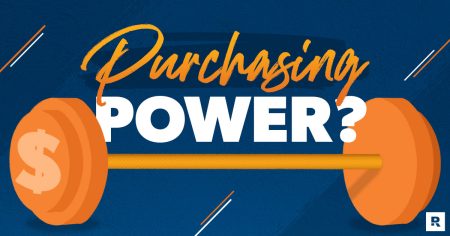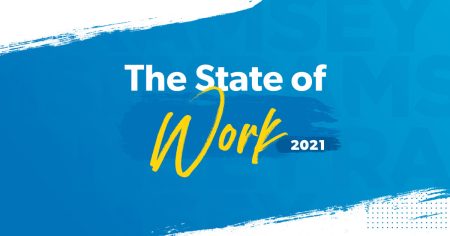In the fast-paced world of business, maintaining a steady cash flow is crucial for survival and growth. However, even the most well-run businesses can hit a rough patch or find themselves in need of quick capital to seize a growth opportunity. This is where cash flow loans come into play. Think of them as a financial lifeline, designed specifically to keep your business afloat during precarious moments, helping you navigate temporary cash crunches or seize golden opportunities. Whether you’re looking to cover operational costs, invest in new equipment, or simply need a cushion during a slow season, understanding how cash flow loans work could be the key to unlocking your business’s potential.
What are cash flow loans?
Cash flow loans, in simple terms, are based on the future cash flows of a business. Rather than focusing on the hard assets of the company, lenders evaluate the projected revenue and cash generation capabilities when deciding to fund. This makes cash flow loans particularly appealing for businesses that may not have substantial physical assets, but have strong revenues and profit margins. Essentially, it’s about borrowing from your future self—using tomorrow’s earnings to fuel today’s growth and operations. These loans can be flexible, offering businesses the necessary breathing room to manage expenses, invest in new projects, or expand operations without the immediate burden of traditional asset-based lending requirements.
How do cash flow loans work?
Cash flow loans typically work by allowing businesses to borrow based on their projected cash flows. This is calculated using the business’s current financial situation, including income and expenses, to estimate future earnings. Lenders utilize this forecast to determine how much money they can safely lend, ensuring that the business can repay the loan from future income. The process usually involves detailed financial analysis, including a review of the business’s sales history, profit margins, and cash flow statements.
The repayment terms for cash flow loans can vary significantly depending on the lender and the financial health of the business. Generally, these terms include a fixed interest rate and a repayment schedule that may span months or a year. Importantly, because the loan is unsecured, lenders may charge a higher interest rate than traditional secured loans. This higher cost reflects the increased risk the lender takes on by not requiring collateral.
For businesses, managing a cash flow loan responsibly means closely monitoring cash flow projections and making adjustments as needed to ensure the loan does not become a financial burden. It’s essential for businesses to consider their ability to manage the loan’s repayment schedule, especially during periods where income is lower than expected.
Cash flow loans vs. traditional loans.
When comparing cash flow loans to traditional loans, the key difference lies in the collateral. Traditional loans typically require physical assets as collateral, such as real estate or equipment, making it a challenge for businesses that lack substantial assets but are cash-rich.
Another notable difference lies in the application and approval process. Cash flow loans often boast a faster approval process since the evaluation is heavily based on financial projections and revenue performance, not the valuation of physical assets. This can be particularly beneficial for businesses needing quick funding to capitalize on immediate opportunities or to address sudden financial shortfalls.
However, the trade-off for the convenience and accessibility of cash flow loans is usually a higher interest rate compared to traditional loans, due to the higher risk lenders assume by not requiring collateral. Businesses should weigh these costs against the benefits, considering their cash flow stability, growth prospects, and ability to manage the loan repayment under varying economic conditions.
Ultimately, the choice between a cash flow loan and a traditional loan depends on the specific needs, circumstances, and financial health of the business. Each financing option offers unique advantages and challenges, making it crucial for business owners to carefully assess their situations and future financial projections before making a decision.
Types of cash flow loans.
Cash flow loans come in several types, making them a flexible financing option for many businesses. The types include:
- Merchant cash advances: Merchant cash advances are a form of financing where a lender provides a lump sum payment to a business in exchange for a percentage of the business’ daily credit card sales.
- Business cash advances: A business cash advance is another type of financing where a company receives a lump sum of cash from a lender. This amount is then repaid over time via a fixed percentage of the business’ daily sales.
- Unsecured line of credit: An unsecured line of credit allows businesses to access funds as needed, without putting up any collateral. These credit lines can be helpful for managing cash flow fluctuations or unexpected expenses.
- Invoice financing: Invoice financing is a form of funding where businesses can borrow money against the amounts due from customers. This option provides immediate cash flow by allowing businesses to turn their outstanding invoices into immediate capital. It’s particularly useful for businesses with long invoice payment cycles, enabling them to maintain operations and growth without waiting for clients to pay.
Pros and cons of cash flow loans.
Before we delve into the advantages and disadvantages of cash flow loans, let’s remember that every business is unique. What works best for one may not necessarily be the right choice for another. It’s crucial to understand your own business needs and circumstances to make an informed decision. Now, let’s get started with the pros and cons.
Pros of cash flow loans
- Fast access to cash. Unlike traditional lending, which can take weeks or months due to the requirement of extensive documentation and collateral valuation, cash flow loans allow businesses to access needed funds in a matter of days. This rapid turnaround can be crucial for covering immediate expenses or capitalizing on timely opportunities.
- Lower credit score requirements on some loans. Since lenders focus more on the projected revenue and cash flows rather than the creditworthiness of the borrower, businesses with less-than-perfect credit can often still qualify. This makes cash flow loans an attractive option for newer businesses or those that have encountered financial difficulties in the past.
- No collateral required in the traditional sense. Cash flow loans do not necessitate physical assets as security, making them more accessible to businesses without significant tangible assets. This characteristic is particularly useful for service-oriented or tech companies, which might not have the equipment or real estate typically required for traditional loans.
Cons of cash flow loans
- Can be more expensive than other forms of financing. Because cash flow loans often come with higher interest rates and fees due to the lack of physical collateral and the perceived higher risk by lenders, they can be more costly over time compared to traditional loans.
- Relies on business generating enough cash flow to repay the loan. A critical consideration for cash flow loans is the dependency on the business’s ability to generate sufficient cash flow to meet repayment obligations. Since these loans are based on future earnings projections, any shortfall in revenue can pose a significant repayment challenge, potentially leading to financial strain or impacting the business’s credit.
- Riskier for businesses with unstable or unpredictable revenue streams. Businesses that experience significant fluctuations in sales or operate in highly volatile markets may find cash flow loans especially risky. Since repayment depends largely on consistent revenue, periods of low income can lead to difficulties in meeting loan obligations, potentially exacerbating financial instability.
How to get a cash flow loan.
Navigating the process of obtaining a cash flow loan can seem daunting, but with the right approach, it can be streamlined and successful. Here’s a step-by-step guide to get you started:
- Evaluate your financial health: Before applying, assess your business’s current financial status. This includes reviewing your cash flow statements, profit and loss accounts, and future financial projections. Understanding these will help you determine how much you need to borrow and can afford to repay.
- Research potential lenders: Not all lenders offer the same terms for cash flow loans. Spend time researching to find those that cater to your business type and offer terms that align with your needs and repayment ability.
- Prepare necessary documentation: While cash flow loans may not require collateral, lenders will still expect a comprehensive view of your business’s finances. This typically includes financial statements, tax returns, cash flow projections, and a business plan that outlines how the loan will be used.
- Apply for the loan: Once you have gathered all necessary documents, fill out and submit your loan application. Be prepared to answer additional questions about your business and financial projections.
- Carefully consider the terms of your loan agreement: Carefully examine the terms outlined in your loan agreement. Pay close attention to the interest rate, repayment schedule, and any fees or penalties for early repayment or late payments. If there are points or terms that are unclear, don’t hesitate to reach out to the lender for clarification. Making an informed decision now can prevent misunderstandings or financial strain in the future.
Remember, transparency with your lender about your business’s financial health and clear communication can significantly enhance your chances of success in obtaining and managing a cash flow loan.
Exploring alternatives to cash flow loans.
While cash flow loans can be an excellent solution for many businesses, they’re not the only option. Other financing alternatives may be more fitting, depending on your business’ specific needs. Let’s take a look at a few:
- Invoice factoring: One alternative to cash flow loans is invoice factoring. This method involves selling your unpaid invoices to a third party (i.e. ‘factor’) at a discounted rate. The factor then collects payments directly from your customers, allowing you to get immediate cash. It’s an excellent choice for businesses that have to wait for long periods to receive payments from their customers.
- SBA loans: SBA loans are backed by the Small Business Administration (SBA) and often come with lower interest rates and more favorable terms. However, they can take time to process and may require more paperwork.
- Term loans: Term loans are traditional business loans where a lender provides upfront money, repaid over a specified period with interest. They are used for capital investments like equipment or real estate. While term loans have lower interest rates than cash flow loans, collateral and a solid credit history are usually required.
Remember, the best financing option for your business depends on various factors, including your business’ size, its stage in the business lifecycle, its financial stability, and your specific needs. Weigh your options carefully and consider seeking advice from a financial advisor to make an informed decision.
Cash flow loans can be a versatile and valuable solution for businesses requiring extra cash. They provide flexibility and easy access to funds. However, as with any financial decision, it’s important to carefully consider the potential risks. Understanding the nature of these loans—as well as the differences between them and their asset-based counterparts—is crucial for making informed and beneficial financial decisions.
Quickly compare loan offers from multiple lenders.
Applying is free and won’t impact your credit.
Information provided on this blog is for educational purposes only, and is not intended to be business, legal, tax, or accounting advice. The views and opinions expressed in this blog are those of the authors and do not necessarily reflect the official policy or position of Lendio. While Lendio strives to keep its content up-to-date, it is only accurate as of the date posted. Offers or trends may expire, or may no longer be relevant.
Read the full article here
















